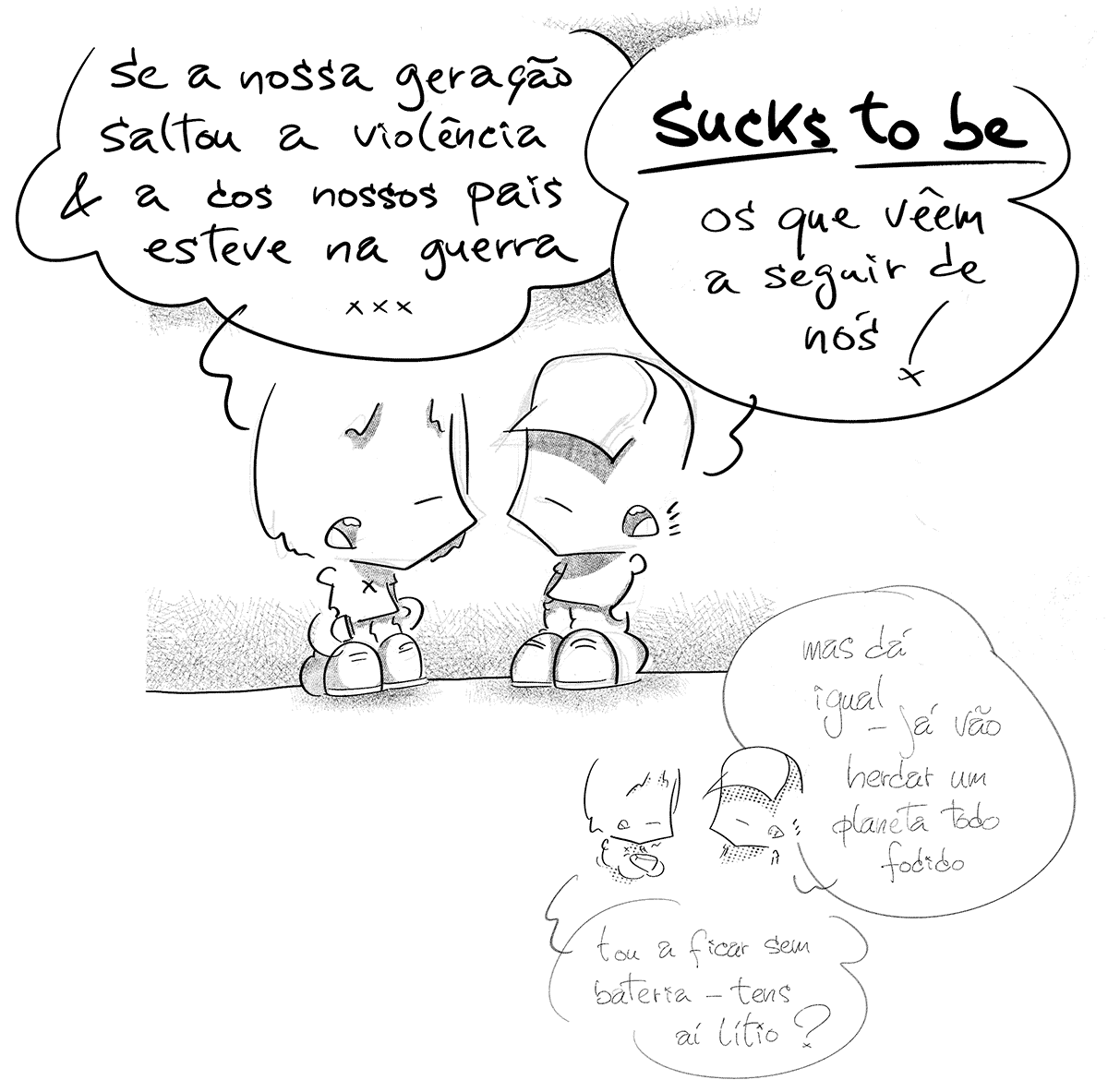padrões
Esta semana metemos em dia a entrevista de Marcelo D’Salete no TCJ 13 nov 2019 a propósito do "Angola Janga", lemos "O colecionador de Tijolos" de Pedro Burgos, trouxemos o já mencionado "O Espírito do Escorpião" dos outros senhores: apontamentos dispersos em politics e História cruzado na BD com passagem de testemunho entre gerações, entradas de um padrão maior que continuamos a perseguir — começa por A, não é o A redondo. Esqueceram-se? Nós também. É apenas humano, e por vezes parece que adivinhamos o que está por vir, mas não arrogamos o dom à futurologia porque estamos longe de ser os únicos, é da condição de se ser humano.


Em linha com a linha dos tempos, elevada a ciência, segway a long read na mais recente tendência ao loop, um "working group of historians, semioticians, physicists and others to help anticipate the future of human societies based on historical evidence", processando dados que apenas se tornaram viáveis com o uso das novas tecnologias, agora mais baratas e impossíveis de desligar. Grupo variado que bebe essencialmente da matemática e biologia, inspiração do que chamam "the science of complexity", "which teaches that a system composed of even just a few moving parts can produce complex patterns of behaviour because of the different ways in which those parts interact" 12 ov 2019. Há quem aplauda o esforço multidisciplinar que casa ciência e humanoides, há quem lhe aponte o (middle) dedo. Comecemos desses:
Many historians consider this mathematical approach to history to be problematic. Few historians search for general laws that apply across centuries and societies, or that can be used to predict the future in any meaningful way. That was the goal of the scientific historians of the 19th century, many of whom were inspired by social Darwinism, and it is an approach now regarded as deeply flawed, as well as fatally connected to narratives of empire. Just because there is lots of it, critics say, does not mean that the data is more reliable. On the contrary, such a database risks amplifying the interpretative biases of those who initially recorded the information.
in "History as a giant data set: how analysing the past could help save the future" 12 ov 2019
Não precisamos de recuar ao século XIX, inícios de XXI e voltaram as abordagens pseudo-científicas para justificar ideologias predatórias: ver nacional-fascismo em alta. E são esses e outros retornos que se tornam padrões a calcular, desta por Jack Goldstone e Peter Turchin.
Turchin’s approach to history uses software to find patterns in massive amounts of historical data [where] scholars can pool their research findings with unprecedented ease and extract real knowledge from them. In the future, Turchin believes, historical theories will be tested against large databases, and the ones that do not fit – many of them long-cherished – will be discarded. Our understanding of the past will converge on something approaching an objective truth. It could also be a taste of things to come: a world in which scholars generate the equivalent of extreme weather warnings for the social and political conditions of the future – along with advice on how to survive them.
in "History as a giant data set: how analysing the past could help save the future" 12 ov 2019
E porque aquilo dos três, agora como parte de uma equação:
in "History as a giant data set: how analysing the past could help save the future" 12 ov 2019
- mass mobilisation potential;
- elite competition;
- state solvency;
... igual ao "the Political Stress Indicator", ou Ψ (psi) para os amigos. Esse indicador de stress encostado à história conhecida sobrepõe-se com “astonishing synchronicity” aos "booms and busts" populacionais:
Perceiving a social injustice, one generation set out to redress it violently, the next shrank from violence having grown up with its aftermath, the third started all over again.
in "History as a giant data set: how analysing the past could help save the future" 12 ov 2019
Sincronizando todos agora:
His model of why revolutions occur consists of a set of equations, but a crude verbal description goes something like this: as the population grows there comes a point where it outstrips the ability of the land to support it. The standard of living of the masses falls, increasing their potential for violent mobilisation. The state tries to counteract this but such measures alienate the elite whose financial interests they hurt. Since the elite has also been expanding, and competing ever more fiercely for a finite pool of high-status jobs and trappings, the class as a whole is less willing to accept further losses. So the state must tap its own coffers to quell the masses, driving up national debt. The more indebted it becomes, the less flexibility it has to respond to further strains. Eventually, marginalised members of the elite side with the masses against the state, violence breaks out and the government is too weak to contain it.
in "History as a giant data set: how analysing the past could help save the future" 12 ov 2019
Obviamente aqui regressados a outros ciclos-em-repetição já conhecidos de massas descontentes e elites competitivas.
Durante milhares de anos, a civilização não se prestou à igualização pacífica. Numa grande diversidade de sociedades e níveis de desenvolvimento, a estabilidade favoreceu a desigualdade económica. Os choques violentos foram de importância fundamental na disrupção da ordem estabelecida, na redução da distribuição de rendimentos e riqueza e na diminuição do fosso entre ricos e pobres.
Walter Scheidel in "A Violência e a História da Desigualdade da idade da pedra aos século xxi" 2017
Aos choques violentos chama-lhe os quatro cavaleiros do apocalipse: a guerra de mobilização de massas, a revolução transformadora, a falência do Estado e pandemia mortífera: no seu trilho uma destruição que hoje somos incapazes de imaginar. Mas bem capazes de adivinhar para amanhã:
Things will be good once again, for those of us who are still around to see it.
in "History as a giant data set: how analysing the past could help save the future" 12 ov 2019
Infelizmente o para melhor não se estende a todos, uma outra tendência histórica sempre nos acompanhou desde que nos tornámos demasiado complexos para o tribalismo nómada: quando a carga anterior se recolhe ao estábulo as elites tendem a recuperar o monopólio da extração da riqueza e opressão sobre o resto da sociedade, e o build up de violência recomeça. Dessas diferentes fases encontram-lhe ecos no Brasil dos mil e seiscentos, na ex-Jugoslávia anos 90 ou na Lisboa da austeridade, moving parts de complex patterns of behaviour que enchem agora telejornais. Conhecendo a europa que temos, a europa que tivemos, a europa que vamos ter também parece fácil de prever: é fazer as contas.


